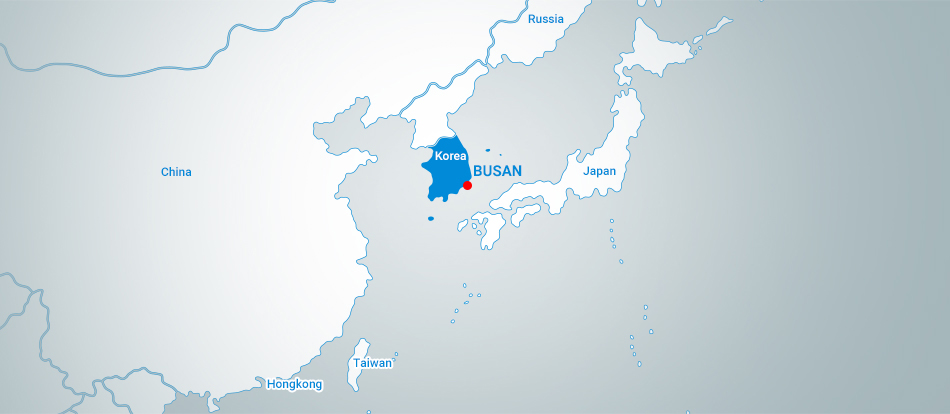City Environment
Busan, a city with beautiful mountains, rivers and the sea, is also an important cultural city. With the
Nakdonggang River bordering the city and picturesque scenery gaining nationwide attention, like that found in
Haeundae, the city serves as a major nexus of cultural activities in the region. Busan is also Korea’s first
international port city. Its location enables the city to serve as a main gateway for the Korean Peninsula as
well as the rest of the Northeast Asian region.
Location
Geographically, Busan has the Straits of Korea to its south; Ulsan to the north; and Gimhae to the west. Cities
that share almost the same latitude with Busan include Jinhae and Gwangju in Korea, as well as Tokyo, Algiers
and Oklahoma City internationally. Busan is eight hours ahead of Greenwich Mean Time (GMT). As for its
geopolitical significance, the city is located at the southern tip of the landmass connecting Asia, Siberia and
Europe. It also serves as a main gateway to the Pacific Ocean. This strategic location places the city at the
center of international sea routes.


Climate
Busan is located at the southeastern most tip of the Korean Peninsula, within a mid-latitude temperate zone
producing seasonal winds. It has four seasons: spring, summer, fall and winter. The annual average temperature
is 14.9°C. The annual average precipitation is 1,441.9mm. Busan has strong winds compared to other areas in
Korea. Spring begins in March and ends in late June. Cherry blossom trees bloom in late March and the
temperature is very comfortable from April to June. The rainy season at the end of June and July signals the
beginning of the coming summer heat. The highest mean temperature of around 32°C is experienced at the end of
July through mid-August. Fall lasts from early September through late-November. The weather is nice and cool
during this time of year because of the continental high atmospheric pressure. Winter starts by the end of
November and continues until February, but Busan rarely receives any snowfall. The average winter temperature
is 3.8°C. Tourists can enjoy Busan throughout all the seasons because of its nice weather and beautiful
scenery. In the summer, the city, particularly Haeundae and Gwangalli beaches, become crowded with visitors who
come to enjoy the beautiful and laidback lifestyle Busan residents have come to love.
Population
From the opening of its port in 1876, the port city of Busan quickly developed into a hub of
trade, commerce and industry. Such a development resulted in a rapid increase in its population, which had
already reached 200,000 by 1936. The next major leap in Busan's population came with the breakout of the Korean
War, which resulted in an endless stream of refugees into the city. As a result, the population of Busan
exceeded 1 million by the end of 1955. Another factor that spurred the population increase was government
policy targeting economic growth. People from rural areas continually moved into the city looking for jobs. By
the end of 1994, there were approximately 4 million people who called Busan their home. Since 1995, the
population slowly began to decrease. As of December 2024, Busan was home to 3,329,888 people, a decrease of 19,668 compared to 2023. The male population stands at 49 percent, while the female population comprises 51 percent. The population of foreign residents living in Busan stands at 63,290, an increase of 7,096, compared to 2023.
